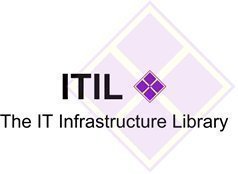Sarbanes Oxley is usually known as Sarbox or Sox, it is a United States federal law passed in 2002, that protects the public against major corporate accounting scandals that proved to be the catalyst of many investors losing billions of dollars worth of value in the stock market. The official name for Sarbox or Sox is the Public Company Accounting Reform and Investor Protection Act of 2002. It was sponsored and helped created by Senator Paul Sarbanes and Representative Michael G Oxley – hence the name.
Sarbox Establishes
Mainly, the Sarbox act establishes lots of wide ranging legislation for all U.S. public company boards, management and public accounting firms. Some of the highlights enacted by Sarbox include:
- The Establishment of a public and government agency called the Public Company Accounting Oversight Board.
- The requirement that public companies must evaluate and openly disclose their financial reporting.
- The need for CEO’s and CFO’s to certify the company’s financial reports.
- Provisions for Auditor Independence.
- Companies that are listed on stock exchanges such as NASDAQ or NYSE must have totally independent audit committees that can provide oversight to both the company and the auditor.
- Additional financial disclosures that are more transparent and comprehensive.
- A company can no longer give a personal loan to any CEO or executive officer.
- Added criminal penalties for violations in the law dealing with securities fraud.
- Added civil penalties for violations in the law dealing with securities fraud.
Implementation of Sarbox
As you can see from some of the enhancements this law enacts, both large and small publicly traded companies in the US. must make extensive changes in how they report their earnings, audit their business and improve transparency on financial decisions.
Because implementation of Sarbox can be a daunting task, even for a very small publicly traded company, small companies that are able to, actually went private, in order to forgo the cost of implementing the new requirements for Sarbox. For those companies that can not go public, many companies are forced to make extensive changes to their financial reporting structure, which while costly, ultimately benefits the investors. Companies can easily increase the investor’s faith in the company and hopefully add value to the company by implementing Sarbox.
Cost of Implementation of Sarbanes Oxley
While most investors and executives of large corporate companies acknowledge a need for legislation such as Sarbox Oxley due to the fact that many investors lost billions to fraudulent financial reporting, the downside is that it can be costly to implement.
Usually the biggest cost to implementing Sarbox is to update the information systems in order for them to comply with the new reporting and financial control requirements. However, for the largest of the corporate entities that have switched over to Sarbox, the initial cost of compliance was $4.36 million on average. This statistic comes from the Financial Executives International (FEI) survey, which asked 217 companies with average revenue of over 5 billion per year. It should be noted that first year costs will probably be the highest. The more companies gain experience implementing Sarbox, the less time and money it will cost for implementation and consultation.




Follow Us!